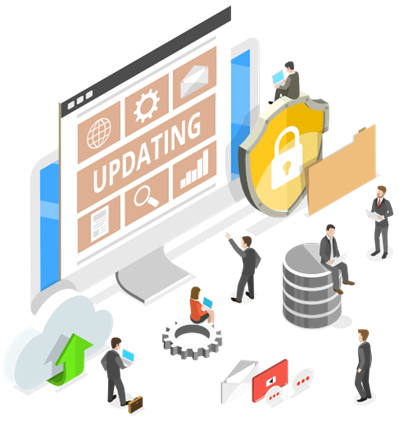Smart SLA
A service-level agreement (SLA) defines the level of service expected by a customer from a supplier or service provider, laying out the metrics by which that service is measured, and the remedies, if any, Ideally, SLAs should be aligned to the technology or business objectives of the engagement. SLAs remain a critical component of outsourcing contracts, forming the core of service delivery reporting over the life of the IT Services agreement.
Datec offers Smart SLAs to customers and partners within Fiji Islands and other pacific regions. Unlike the traditional SLAs defined in the best practices frameworks, our Smart SLAs are geared with the Pro-active Approach and tools powered by Remote Management Monitoring (RMM) and Professional Services Automation (PSA).
 What makes our Smart SLA Services Unique
What makes our Smart SLA Services Unique
- Single Point of Contact (SPoC) for any IT Interruptions
- An OPEX Solution Model
- Expert ICT Resource Pool at a minimum cost
- Technology Advantage
- Shoulder your ICT Worries on Third Eye
- Fewer ICT Incidences by Pro-active Approach
- Seldom downtime with an enhanced business continuity
- Automated Pro-active Maintenance
- Automated RMM
- Essential Security Monitoring
- Essential Data Backup Monitoring
- ICT Environment Review and Reporting
Since Datec is an ICT industry that is fast developing, the team closely works with our clients in selecting solutions that are sustainable and will last for a longer term. An area of concern is the backup spares for major infrastructure that are purchased and deployed at corporate client sites. There are situations whereby the products reach the End of Life and vendors are not able to support them beyond the warranty period. For the particular client, their infrastructure requires critical spares to be kept to avoid disruption to their operation. Datec plays a key role in maintaining critical spares and after-sales support for corporate clients through Service Level Agreements (SLA’s). The SLA’s also act as a preventive measure and a proactive measure to identifying risk and mitigating it on time.
ICT Calls Strategy Matrix 
Figure: Point of Contact (POC) and Issue Escalation Matrix
Customer Call Classification
| Severity 1 – Critical Problems | Severity 2 – Major Problems | Severity 3 – Minor Problems |
|
|
|

